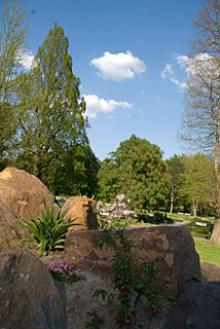Biking excursions


The Schaumburg Land is a landscape that seems to have been created for bike tours and has something for every cyclist. Areas that are flat or have only gentle hills are attractive to serious athletes, enthusiastic amateurs and families alike. The more sporting will however also find plenty of opportunities to pedal away in the Bückebergen and of course the Weser Mountains. Strong legs are needed on many of the challenging hills but any cyclist can make it to the top, where they will be rewarded with wonderful views into the valley.
Here we offer you the topical Routes.
More information you will find on www.schaumburgerland-tourismus.de.
Route of Princes
53 km; as you travel along this route you will find numerous traces of the counts and princes of the Schaumburg Land. Important phases in the life of Count Wilhelm of Schaumburg-Lippe and also his last resting place are associated with the course of the Fürstenweg.
In the Footsteps of Wilhelm Busch
25,5 km; on April 15, 1832 the painter author and illustrator Wilhelm Busch was born in Wiedensahl, which had great significance for him throughout his life. With only a few breaks when travelling Wilhelm Busch spent most of his life in this attractive region. Almost all of his famous illustrated stories were created here together with numerous oil paintings and drawings of motifs from nature.
Parks & Gardens
65 km; the Schaumburg Land boasts a wide range of different gardens that will not only fascinate the keen gardeners among you. From a romantic city garden and charming farm gardens to a formal garden at a castle or a perfect landscape garden - the Schaumburg Land has it all as well as a wide range of plants.
Castles & Stately Homes
87 km; The traditional and historically exciting Schaumburg Land offers cyclists a journey through time at selected stately homes and castles that are set in beautiful landscapes and reflect the building styles through the centuries, travelling through forests, mountains and valleys. The many castles and stately homes that you will see can tell a story about the historical significance of the region.
Industrial History
25 km; The history of the earth smiled on the Schaumburg Land. Deposits from ancient geological ages formed natural resources that could be used as raw materials, building materials or an energy source. Stores of fine sandstone or high quality smith’s coal at gypsum and chalk in the Weser mountains and brick and potter’s clay at Schaumburg chalk hollow were already discovered at the end of the Middle Ages and have been exploited ever since. This helped to create one of oldest industrial areas in northern Germany in the last century, the traces of which can still be seen at every turn